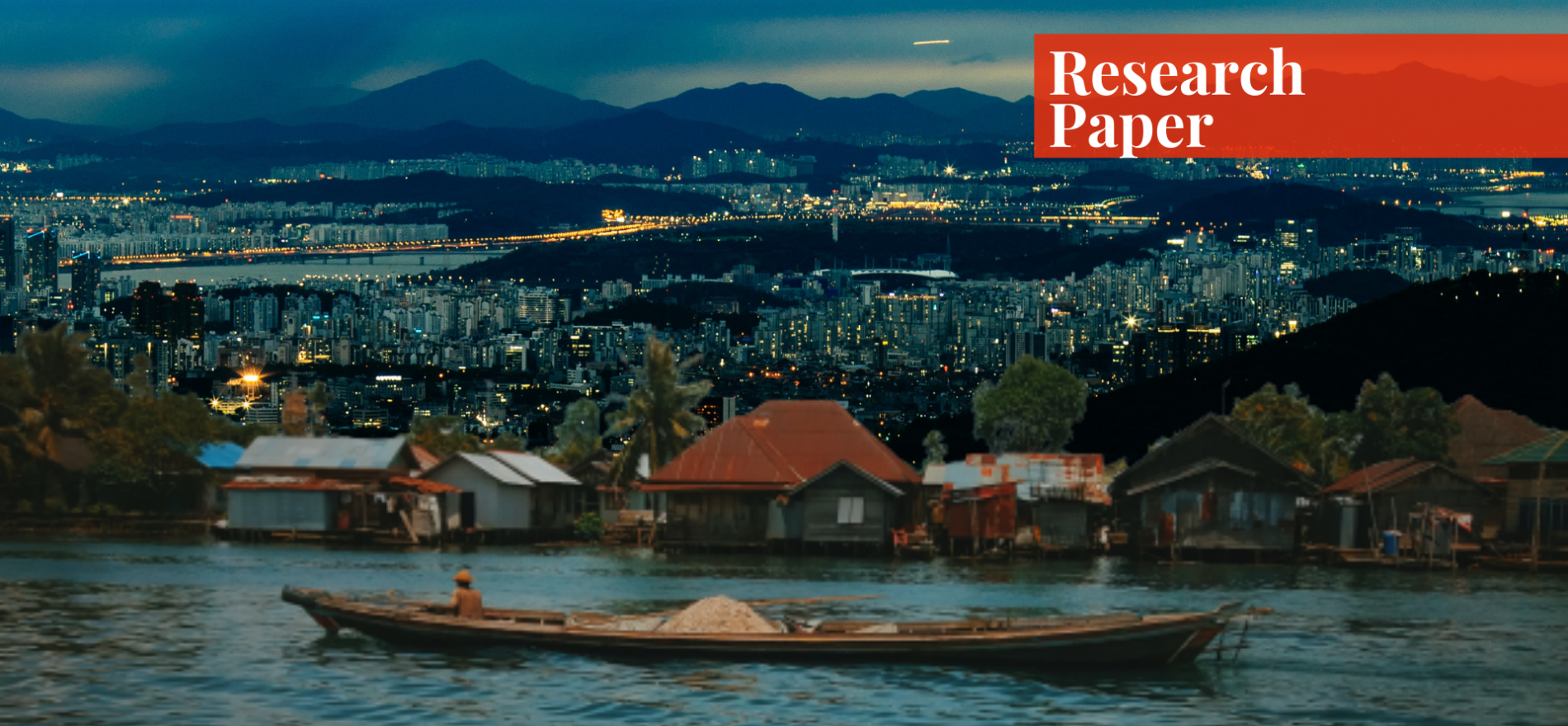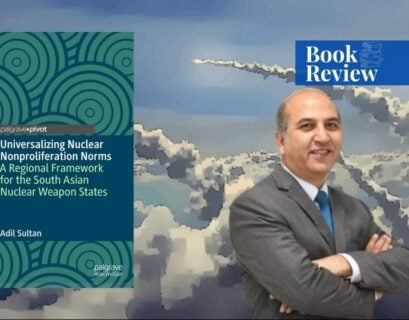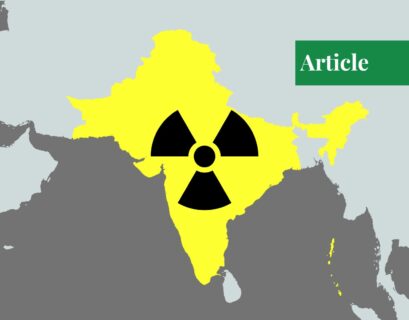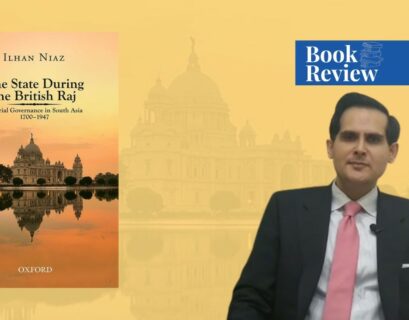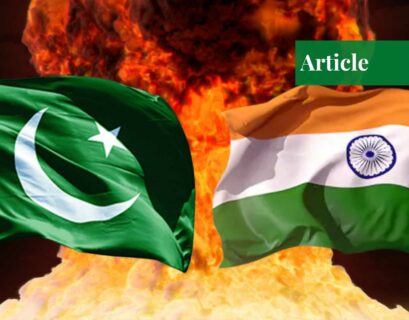Samrah Aslam is a defence strategist holding an M.Phil Degree in Defence and Strategic Studies from Quaid i Azam University.
The new world order, which emerged after the Cold War, witnessed the rise of regionalism beyond Europe, in South Asia and across the world. Critically speaking, regions and regionalism became more important than individual state interests. States joined hands to cooperate based on common identity and shared interests.
Being a vital region in contemporary world politics, South Asia seems to be a failure in the name of regionalism and regional integration. Geography alone is not enough to determine the criteria for a region and apply the theory of regionalism.
Politics, economy, and most importantly shared values, ideas and interests play a significant role in regional integration. This can be seen in the case of Western Europe and in some eastern European states, which are a part of the European Union. However, in the case of the South Asian Association of Regional Cooperation (SAARC), regional integration has failed.
Regions and Regionalism
In international politics, a region can be defined as “a limited number of states linked by a geographical relationship and by a degree of mutual independence”.1 “Region” is a complicated concept to comprehend in a single definition. In a broader view, regions are “areas having definable characteristics but not always fixed boundaries”.
Edward Mansfield and Helen have focused on geographical proximity while defining a region. According to their assertion, a region is an area consisting of states located in the same geographical area. Moreover, regions can be defined on the basis of political, economic, and physical criteria.
In contemporary times, regions have seen a massive transformation over the years. One major change includes the change in relative weights given at the various level of analysis i.e. International, national, and regional level.
During the era of the Cold War, regional classification depended upon states’ political or economic, and sometimes military, orientation. However, since the 1980s, regional and some sub-regional or micro-regional organizations have been playing a major role in world politics, including the Shanghai Group, Mercosur, The Baltic Council of Ministers, the Visegrad Group, etc.
A second major transformation includes the ever-enhancing differentiation between physical (geographical and strategic) and functional (economic, environmental, and cultural) regions. A growing focus on global-regional relationships has increased the importance of sub-regional and functional regions.2
Whereas, regionalism can be defined as the theory of international relations that deals with the expression of a common sense of identity and purpose, combined with the creation and implementation of institutions. These institutions express a particular identity and shape collective action within a geographical region.
In contemporary times, regionalism also includes functional regions in areas of study. This inclusion comes from the realization that regions are not confined by geography anymore.[3]
Regionalism: A Debate Between Rationalists and Constructivists
Academic studies in regionalism, while applying and understanding the theory of regionalism and the process of region formation, have also witnessed major debates between rationalists and constructivists. From a historical perspective, regions were often defined on the basis of economic and institutional links.
The Rationalist school of thought focuses on region formation from a historical perspective. It lays emphasis on the material basis of region formation—economic and institutional links—because most of the regions are considered to be institutionally sound in the current era.
In contrast to it, constructivists focus on the construction of regions by the redefinition of norms, identities, and shared cultural values. Constructivists use the notion of common cultural values and claim that regions grew because of the process of decolonization; it led to the formation of “cultural blocs” in the decolonized world.
Constructivists believe that the social construction of a region shapes institutional making and collective action on behalf of said region. Constructivists reject the static material basis of the establishment of regions given by rationalists. These two schools of thought are pre-eminent in the understanding of basic concepts of regionalism and region.4
New and Old Regionalism
Old regionalism emerged after WW-II and lasted until the 1980s. It focused primarily on state interactions. Old regionalism lost much of its dynamic in Europe and in the developing world in the early ‘70s as a new regionalism replaced it in the 1980s.
Old regionalism has its roots in the devastating experience of inter-war nationalism and World War II. Therefore, old regionalism is closely linked with European integration, particularly with the establishment of European Communities (EC). Immediately after the Second World War, there was a lot of discussion about European regionalism.
A series of initiatives, launched in 1951, resulted in the European Coal and Steel Community (ECSC). The long-term goal was more ambitious, and in 1958 the European Economic Community (EEC) and the European Atomic Energy Community (EAEC) were integrated into the EC through the Treaty of Rome. It eventually led to the official creation of the European Union in the 1970s.
There was a debate on the emergence of old regionalism in the developing world, especially in Africa and Latin America, and to some extent in Asia and other developing regions. Debates about regionalism in the developing world were merely linked to colonialism, anti-colonialism, and the struggles to augment economic development in the newly independent nation-states in the Third World.
The majority of the discussions in the Third World were influenced by the structural traditions of economic development advocated by Gunnar Myrdal. When it came to region formation and integration, the developing world’s focus was on development, industrialization promoted by the state, and nation-building through protectionism and import substitution.
On the other hand, the new regionalism emerged after the period of “Eurosclerosis”. 5The term “Eurosclerosis”, popularized by German economist Herbert Giersch, referred to the economic stagnation that can result from excessive regulation, labor market rigidities, and overly generous welfare policies. It was originally used to refer to the European Community (EC).
During the period of Eurosclerosis, new regionalism presented itself as a complex of relations between state and non-state actors. The spread of the forces of globalization around the world increased the importance and intensity of this regionalism. 9
New regionalism brought forth several new trends. These trends included an increase in the number of regional free trade areas and agreements, externally oriented and less protected regionalism, anti-hegemonism, the rise of multi-dimensional regionalism, and an increase in the importance of civil society and business corporations all around the world.
Regionalism in South Asia: A Critical Appraisal
Regionalism has become an imperative phenomenon in international politics in contemporary times, especially due to the transformation of the world order in the post-Cold War era. The concept of regionalism can be considered as the most dominating trend in world politics. This significance is owed to the increase in the number of regional groupings augmenting the significance of political and economic integration at the regional and subsequently global level.
Regional platforms are essential for states to increase their influence at the international level. This can be best understood by taking the example of the European Union as a success story of regional integration. 10
In South Asia, the South Asian Association for Regional Cooperation—SAARC—was established in 1985 for the promotion of regional cooperation. The main idea behind its formation was the promotion of socio-economic and political interaction among its member countries.
SAARC contradicts the phenomenon of regional integration that brought together the EU. The prevalence of mutual distrust between the vital states of the region, India and Pakistan, has ensured the failure of regional integration.
A number of scholars, including Bjorn Hettne and Fredrik Soderbaum, have attempted to analyze the level of regionalism in South Asia by applying the term “Region-ness”. This term is applied to a geographical area to identify the level of regional integration in it. Bjorn introduced five levels of “region-ness” to describe it. These levels are:
- The region which is a unit in term of geography.
- The social set-up of a region or regional complex.
- Transnational cooperation in regional society.
- A region with a regional community and civil society.
- A region as a “region state”.
In addition to that, regionalism may also be classified into three main categories—core regions, intermediate regions, and peripheral regions. Core regions are politically and economically strong and dynamic; intermediate regions are thoroughly related to other core regions. Whereas, peripheral regions are weak in economy and politics.11
While analyzing the levels of “region-ness” in South Asia, it can easily be comprehended that South Asia may be taken as a mere geographical region, because of the geographical proximity of states within it, and as a peripheral region because of its poor economic and political situations. Furthermore, the region is also prone to alarming conflicts and escalations.
The basic objective of SAARC’s formation was to enhance economic and political integration and interdependence in the region to avoid wars and resolve conflicts through peaceful means. This objective has been negatively impacted by the trust deficit between the member states of the organization.
Furthermore, interstate conflicts pose a direct threat to the concept of regionalism. Therefore, regional cooperation in its real sense cannot be attained unless all of the SAARC members shed their differences and set clear terms of engagement to resolve their simmering issues
Apart from the regional political differences between the core states of the region, there has been significant concern about the presence of major powers, particularly India, dominating the regional setups.12 The imbalance between India and other countries of South Asia often leads to insecurity among small powers against the hegemonic designs of India.
Small countries, including Sri Lanka, Nepal, and Bhutan, are largely influenced by the fear of Indian hegemony. India’s size and population are two of the major reasons for the political differences and bilateral disputes.13
The constant increase of military budgets in South Asia is also hampering the way of regional integration. Despite having common interests to develop, states are trying to acquire more and more lethal weapons to weaponize the region more dangerously. An arms race between these states has challenged the efficacy of regional forums and sabotaged the commitments for regional cooperation and integration.
In addition to that, border issues can also be taken as a hurdle to the relevancy of regionalism in South Asia. Border conflicts between India and Pakistan, mainly the Kashmir conflict as the bone of contention, have led to three major wars. Apart from the war of 1948, 1965, and 1971, military skirmishes between the two rivals have been quite frequent. India has also issues with Sri Lanka, Nepal, and other regional states on territorial claims.
Furthermore, political and ideological issues have obstructed the ideas of shared identities and common interests. For example, the political differences over Tamils between India and Sri Lanka, the issue of an open border and free movement of men and material between Nepal and India, and the Chakma refugee and the Farakka barrage issue between Bangladesh and India.
In addition to that, different factors—the nuclearization of South Asia with increased trust deficit, the conflicts over resources, and the territorial issues between the member states of SAARC—are working together to impede the relevance of regionalism in South Asia. Due to these factors, SAARC as a regional organization can not increase its relevance in the region.
Conclusion
In modern times, the concept of regionalism and regional integration has been prominent in global affairs. Regionalism is essential to enhance social and economic development by focusing on regional harmony and cooperation between the states of the region.
The formation of SAARC was meant to help the member countries pave the way for economic integration, growth, and self-reliance. That, unfortunately, could not happen because of the prevailing conflicts in South Asia making it one of the most conflict-ridden regions.
Issues and conflicts are hazardous for regionalism and South Asia proves to be an irrelevant case study of the success of regionalism. Without sorting out the core conflicts, the idea of regional integration of South Asia would be a fruitless suggestion.
1 Muhammad Jamshed Iqbal, “SAARC: Origin, Growth, Potential and Achievements,” Pakistan Journal of History and Culture 27, no. 2 (2006): 127-140.
2 Raimo Vayryen, “Regionalism: Old and New,” International Studies Review 5, no.1 (2003): 25-51. https://www.jstor.org/stable/3186488
3 Fredrick Soderbaum, “Rethinking Regions and Regionalism.” Georgetown Journal of International Affairs 14, no.2 (2013): 9-18
4 Ibid.
5 Herbert Giersch, “Eurosclerosis,” Kiel Discussion Papers 112 (1985).
6 Fredrik Söderbaum, “Early, Old, New and Comparative Regionalism: The Scholarly Development of the Field,” KFG Working Paper (2015). https://papers.ssrn.com/sol3/papers.cfm?abstract_id=2687942
7 Mario Telò, ed., European Union and New Regionalism: Regional Actors and Global Governance in a Post-Hegemonic Era (Hampshire: Ashgate Publishing, Ltd., 2007), 56.
8 Francis Baert, Tiziana Scaramagli, eds., Intersecting Inter-Regionalism: Regions, Global Governance and the EU (New York: Springer Science & Business Media, 2013), 97.
9 D. K. Giri, Contemporary Europe and South Asia (New Delhi: Concept Publishing Company, 2001), 225.
10 Rajpal Budania, India’s National Security Dilemma: The Pakistan Factor and India’s Policy Response (New Delhi: Indus Publishing, 2001), 15.
Bibliography
- Baert, Francis, and Tiziana Scaramagli, eds., Intersecting Inter-Regionalism: Regions, Global Governance and the EU (New York: Springer Science & Business Media, 2013), 97.
- Budania, Rajpal. India’s National Security Dilemma: The Pakistan Factor and India’s Policy Response. New Delhi: Indus Publishing, 2001. 15.
- Giri, D. K. Contemporary Europe and South Asia. New Delhi: Concept Publishing Company, 2001. 225.
- Soderbaum, Fredrick. “Rethinking Regions and Regionalism.” Georgetown Journal of International Affairs 14. no.2 (2013): 9-18.
- Söderbaum, Fredrik. “Early, Old, New and Comparative Regionalism: The Scholarly Development of the Field.” KFG Working Paper. 2015. https://papers.ssrn.com/sol3/papers.cfm?abstract_id=2687942
- Telò, Mario. ed. European Union and New Regionalism: Regional Actors and Global Governance in a Post-Hegemonic Era. Hampshire: Ashgate Publishing, Ltd., 2007. 56.
- Vayryen, Raimo. “Regionalism: Old and New.” International Studies Review 5.1 (2003): 25-51. https://www.jstor.org/stable/3186488
If you want to submit your articles and/or research papers, please check the Submissions page.
The views and opinions expressed in this article/paper are the author’s own and do not necessarily reflect the editorial position of Paradigm Shift.
